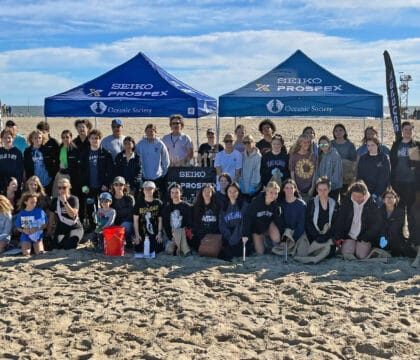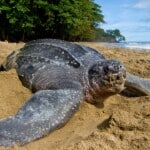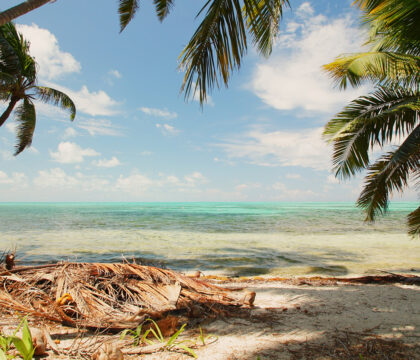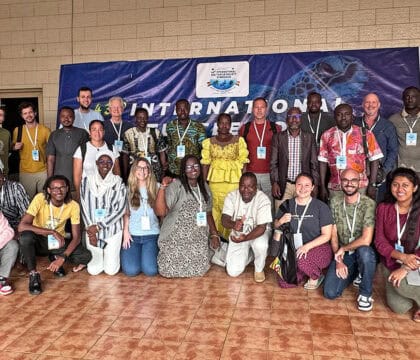August 12, 2016 • Trip Reports
Alaska holds a wealth of incredible national parks to explore, but one of the less talked-about gems is Glacier Bay National Park. It is one of the only places in the world where you can see what an ecosystem looks like as it emerges from an ice age.
About 4,000 years ago, the planet experienced the Little Ice Age, a short period of cooling with glaciation that peaked around 1750. Since then, the glaciers of Glacier Bay have been advancing and retreating, with an emphasis on retreating. As they melt away, the exposed rock is recolonized by lichens and mosses, then alder and willow, and finally forests of spruce and hemlock. All the different stages of this process of moving from ice to bare rock to forest can be seen within the park, as well as an abundance of wildlife species.
Our expedition to southeast Alaska traveled not only through Glacier Bay, enjoying pockets of this pristine place that only a few vessels are permitted to go, but we also explored the Inside Passage, home to the biologically rich Tongass National Forest.
Our group gathered on the first morning at the dock at Bartlett Cove, the entrance to Glacier Bay National Park. After stowing our luggage in our rooms and getting to know each other a bit, we headed off into one of the most unique national parks on the continent.
With an itinerary that balances activity and relaxation, each day we enjoyed opportunity to take in the scenery while sitting on the deck as we traveled, as well as hiking, kayaking, and, of course, photography once we anchored.
The first half of this trip focused on the park’s namesake: glaciers. We traveled to Johns Hopkins Glacier and watched an incredible amount of calving activity. Blocks of ice—sometimes as huge as 200 feet tall—would boom, pop, and tumble to the water, splitting into smaller icebergs and sending waves of water rolling out into the bay. Harbor seals rested on ice and sometimes came over to get a closer view of our boat. Black-legged kittiwakes and glaucous-winged gulls flocked around the newly calved ice looking for fish. Because of the calving activity, boats stay well back from the face of the ice but even from a quarter-mile away the glacier put on quite a show.
At Reid Glacier—a much less active glacier—we were able to come to shore and hike up its side, poking our heads into the vibrantly turquoise blue caves created by the melting ice and taking in the dramatic rocky landscape. At Margerie Glacier and Grand Pacific Glacier, we unloaded the kayaks and took a paddle out along cliffs shimmering with nesting gulls, and paddled straight up to a beautiful waterfall pouring down the cliff and into the bay. And at McBride Glacier, we took time to do a little science experiment, learning how to test the salinity of the water, mark its temperature at different depths, and discovering more about the unique ecosystem of a coast recently uncovered from ice.
As we exited Glacier Bay, we stopped at South Marble Island, a place rich with birdlife including common murres, pelagic cormorants, horned puffins, tufted puffins, pigeon guillemots, and more. A highlight of the island is the Steller sea lions that haul out to rest, easy to recognize from a distance by their barks and grunts.
Our captain has a sixth sense for scenic, quiet anchorages and each night we enjoyed a new cove, often feeling like the only people in Alaska in coves with water still as glass. Every once in awhile the crew would bring out the fishing poles in hopes of catching a halibut and we were successful one night, catching two fish that became part of our menu for several days as the Snow Goose’s chef came up with fresh recipes from an extraordinary chowder to zesty ceviche to delicious grilled fish tacos. None of us left the trip with a loose belt line despite the daily kayak trips and hikes.
Another opportunity to add to the menu came on our second to last evening, when we stopped for a hike to Lake Eva. The timing was perfect for gathering ripe blueberries and huckleberries. The entire group fanned out among the shrubs lining the trail on our way back, and collected enough berries to make two pies, including crust made from scratch and topped with freshly whipped cream. There aren’t a lot of people who can say they’ve had a gourmet dessert made with foraged food during their vacation!
While the first half of the trip focused on the icy ecology of Glacier Bay, the second half took us through the temperate rain forest, including Tongass National Forest, giving us a chance to explore new types of habitat. Along with forests with huge ferns, towering conifer trees, lakes lined with sedges and reeds, we also explored muskeg—a type of habitat that forms after spruce trees reach the end of their life. The acidic soil turns boggy, and is covered with mats of sphagnum moss and dotted with pink-colored carnivorous sundews.
We also stopped for a night at Baranof Warm Springs, a harbor that features a wide and roaring waterfall. A hike up along its side brings visitors to natural hot springs. One can bathe in the rock pools, or simply soak in a hot bath in one of the wooden bath houses. The stop was a chance for everyone to spend time exploring the shore in pairs or small groups, and spend some extra time off of the boat.
Wildlife spotted during the 10-day trip included near-daily humpback whale sightings, a close encounter with a pod of playful orcas, Dall’s porpoise, sea otters, Steller sea lions, coastal brown bears including sows with cubs, a plethora of bird species such as marbled murrelets, black-legged kittiwakes, glaucous-winged gulls, and of course the ubiquitous bald eagles.
By the time we reached our final destination in Sitka, none of our group was quite ready to say goodbye. In the 10 days aboard the boat, we became a closely knit group of travelers. A few of us had flights out that night, but those who booked an extra couple days in Sitka were grateful to have the extra time to explore the culturally rich city as well as spend just that much more time with new-found friends.
Click here to learn more about Oceanic Society’s Southeast Alaska Cruise.




